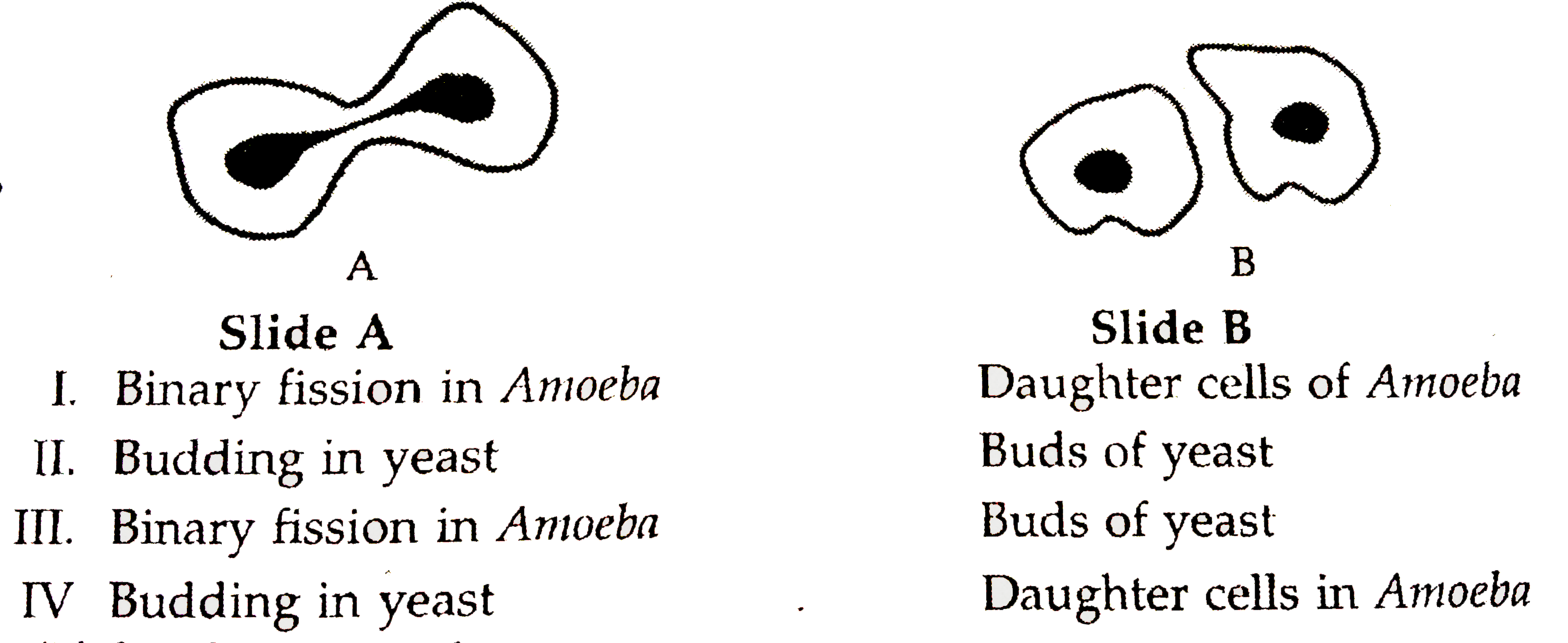Match the following :
(1) Conidia (i) Yeast(2) Budding (ii) Bacteria (3) Gamma cups(iii) Aspergillus(4) Binary fission(iv) MarchantiaSolution in Tamil
The correct Answer is:(a) (ii) ; (b) (i) ; (c ) (iv) ; (d) (iii)
Step by step video, text & image solution for Match the following : {:("(1) Conidia ","(i) Yeast"),("(2) Budding ","(ii) Bacteria "),("(3) Gamma cups","(iii) Aspergillus"),("(4) Binary fission","(iv) Marchantia"):} by Physics experts to help you in doubts & scoring excellent marks in Class 10 exams.
Topper's Solved these Questions
- BOOK - FULL MARKSCHAPTER - SAMPLE PAPER - 18EXERCISE - PART - III10videos
SAMPLE PAPER - 18
- BOOK - FULL MARKSCHAPTER - SAMPLE PAPER - 18EXERCISE - PART - IV6videos
SAMPLE PAPER - 18
- BOOK - FULL MARKSCHAPTER - SAMPLE PAPER - 18EXERCISE - PART - IV6videos
SAMPLE PAPER - 18
- BOOK - FULL MARKSCHAPTER - SAMPLE PAPER - 17EXERCISE - PART - IV3videos
SAMPLE PAPER - 17
- BOOK - FULL MARKSCHAPTER - SAMPLE PAPER - 19EXERCISE - PART - IV6videos
SAMPLE PAPER - 19
Similar Questions
What is Tyndall scattering ?
01:34View SolutionState newton's third law
02:41View SolutionState newton's third law
02:06View SolutionThe ratio of masses of two planets is 2:3 and the ratio of their radii is 4:7 . Find the ratio of their acceleration due to gravity .
02:45View SolutionWhat is refractive index ?
03:02View SolutionMatch column I with column II and select the correct option from the codes given below.
Column IColumn IIA.Planaria(i)Binary fissionB.Fungi(ii)Asexual sporesC.Yeast(iii)BuddingD.Amoeba(iv)True regeneration(v)Fragmentation02:48View SolutionThe given slides A and B were identified by four students, I, II, III and IV as stated below:

Slide ASlide BI.Binary fission in AmoebaDaughter cells of AmoebaII.Budding in yeastBuds of yeastIII.Binary fission in AmoebaBuds of yeastIV.Budding in yeastDaughter cells in Amoeba
Of the above mentioned identifications of slide A and B, which one is correct?01:47View SolutionIn the slide showing binary fission in Amoeba and budding in yeast,the correct observations are:
06:18View SolutionThe given slides A and B were identified by four students I, II, III and IV as stated below :

Slide ASlide BI.Binary fission in AmoebaDaughter cells of AmoebaII.Budding in YeastBuds of YeastIII.Binary fission in AmoebaBuds of YeastIV.Budding in YeastDaughter cells in Amoeba
Of the above mentioned identifications of alides A and B , which one is correct?03:47View SolutionHow binary fission in Amoeba can differentiated form budding in yeast ?
06:08View SolutionVegetative reproduction in bacteria occurs by
I. fission
II. budding
III. cyst formation
IV. transformationView SolutionAssertion Budding occurs in yeast .
Reason It is similar to fission process of bacteria .01:49View SolutionExplain with a labelled diagram the asexual reproduction in the following . i. Budding in yeast ii. Binary fission in amoeba.
03:57View SolutionMatch the following : {:("(1) Conidia ","(i) Yeast"),("(2) Budding ","(ii) Bacteria "),("(3) Gamma cups","(iii) Aspergillus"),("(4) Binary fission","(iv) Marchantia"):}
04:31View SolutionDifferentiate between the following:
a. Binary fision in amoeba and multiple fission in plasmodium.
b. Budding in yeast and budding in Hydra.
c. Regeneration in lizard and Planaria02:17View SolutionIn the slides showing binary fission in Ameoba and budding in yeast, what is it observed?
View Solution

